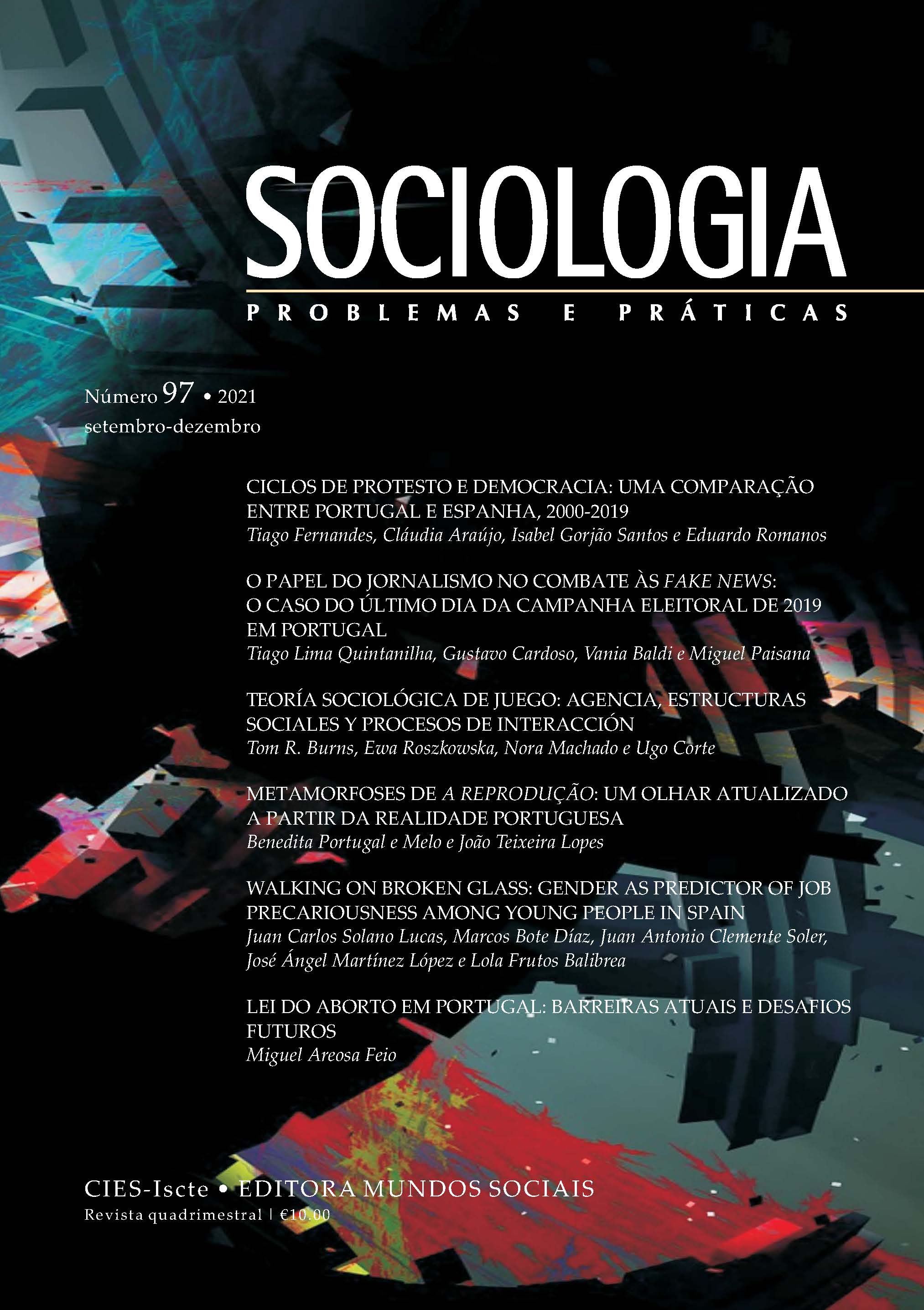Walking on broken glass: gender as predictor of job precariousness among young people in Spain
DOI:
https://doi.org/10.7458/SPP20219718810Keywords:
precariousness, gender inequality, intersectionality, hierarchical segmentationAbstract
Previous evidence reveals that socioeconomic factors, such as contract duration, occupation, activity sector, age, training, nationality, marital status or gender, lead to precariousness. This research looks into the intersectionality of inequalities in order to explain the impact of precariousness among young people based on gender. Data from the Spanish Labor Force Survey (EPA) from 2005 to 2016 has been analyzed using logistic regression and hierarchical segmentation. Results suggest that the economic crisis has widened the gender gap in precarious jobs, such that currently, young women are more likely to face precarious situations as compared to young men.
Downloads
Published
Issue
Section
License
Authors who publish in this Journal must agree the following terms and conditions:
- Authors retain copyright and grant the Journal the right to first publication, while simultaneously agreeing to a Creative Commons Attribution License, which allows others to share their work on condition that they cite the original author(s) and recognise that the latter’s work was first published in this Journal.
- Authors are authorised to enter into additional contracts separately, for non-exclusive distribution of the version of the work that is published in this Journal (e.g. publication in an institutional repository or as a book chapter), subject to recognition of initial publication in this Journal.


